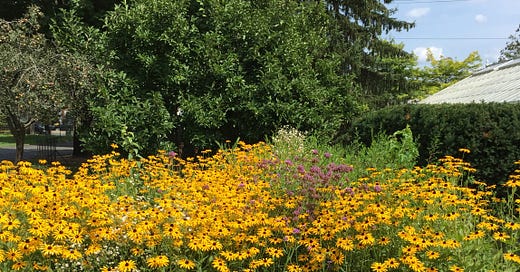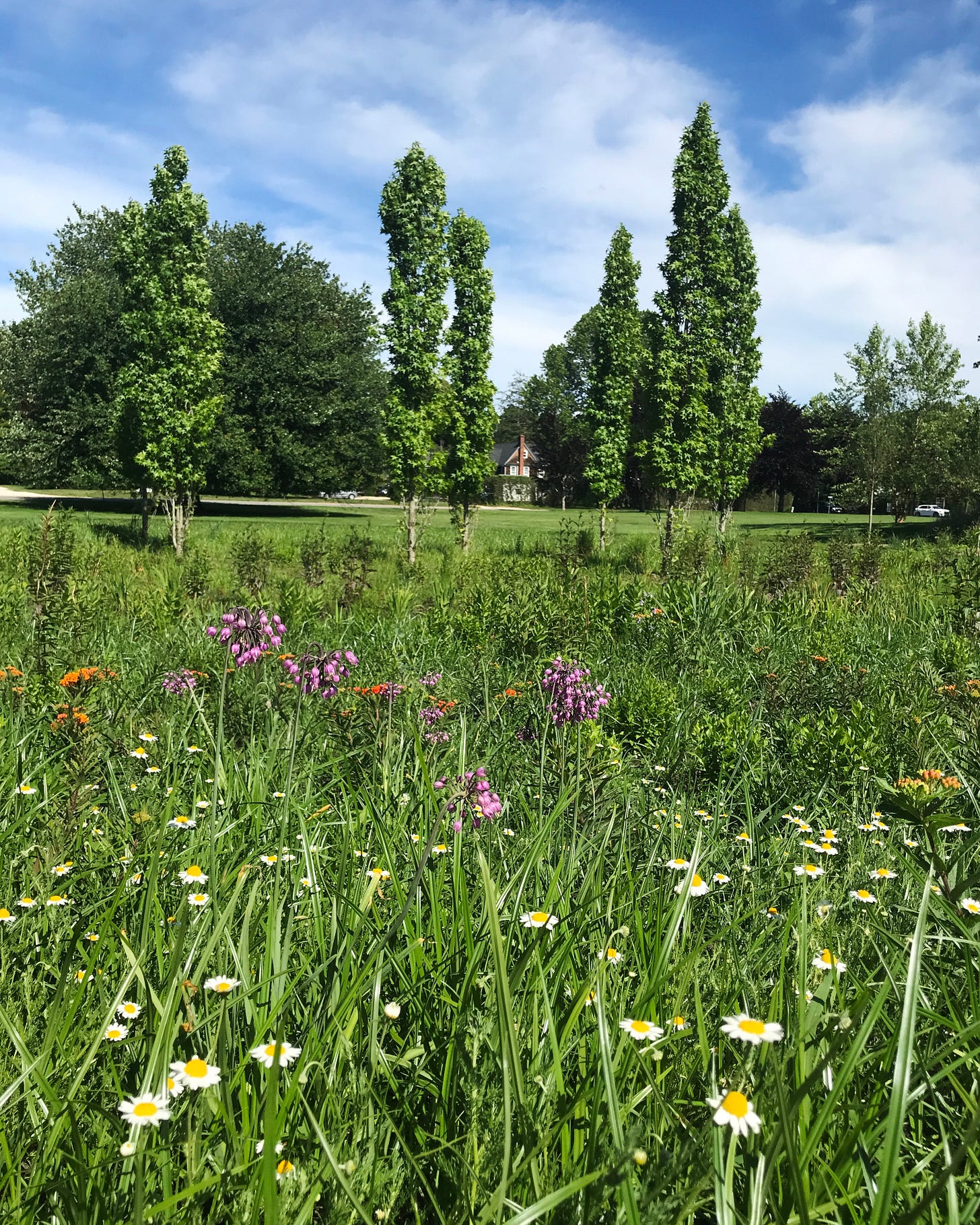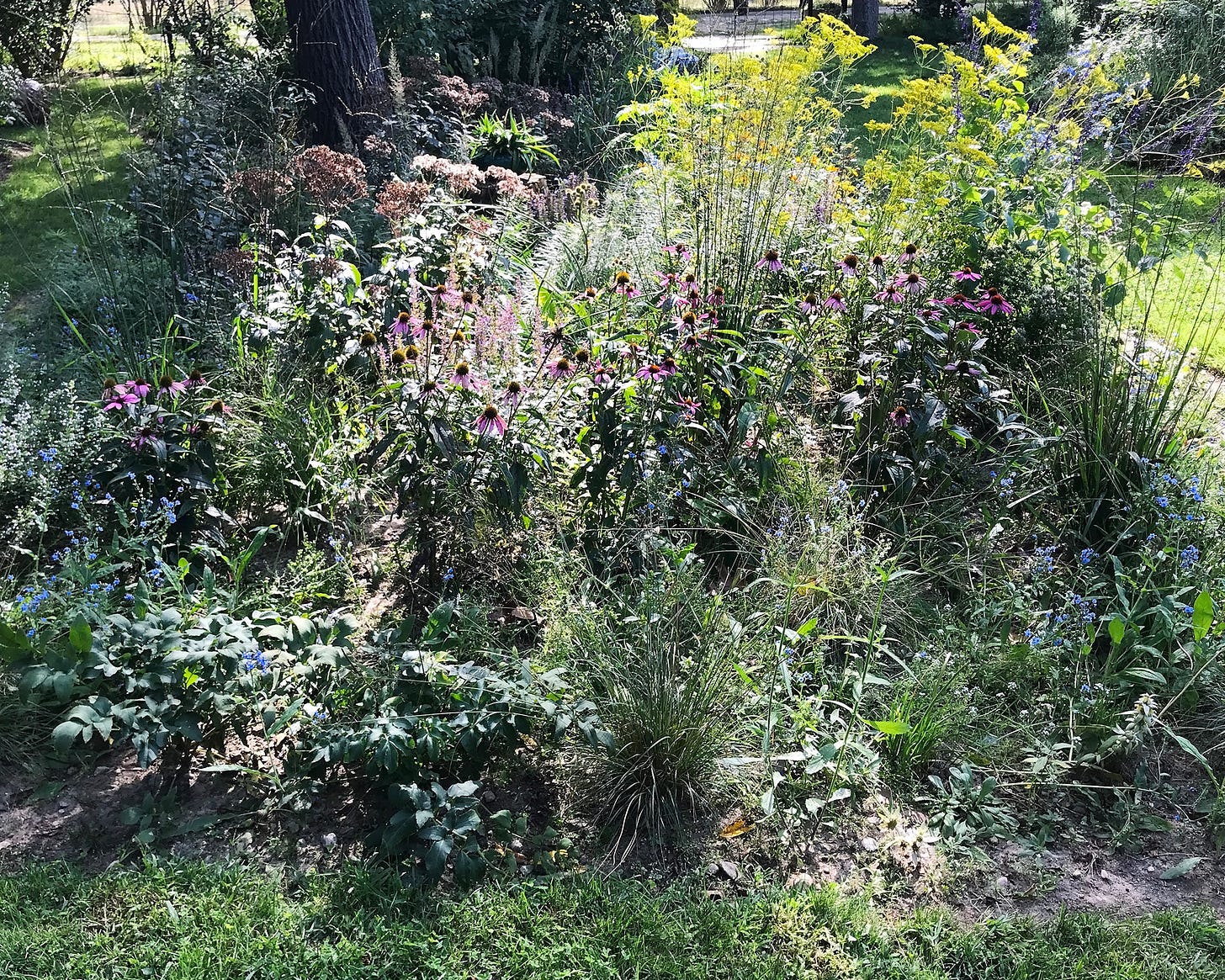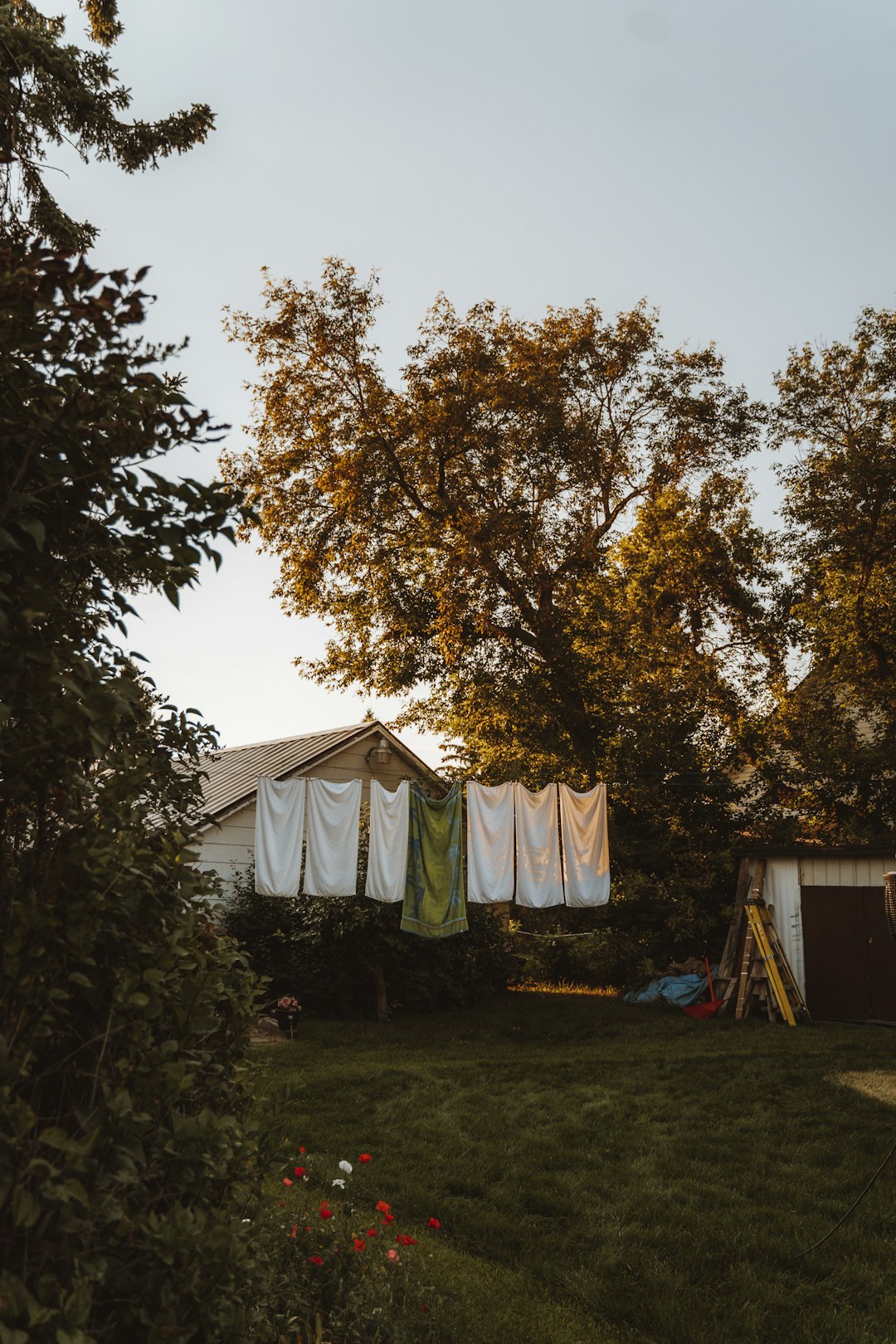Embrace lazy gardening for sustainability
Making the case for a laid back approach to landscapes.
This newsletter is part of Living Small’s monthly Living Landscapes about sustainable gardening. Living Landscapes is becoming it’s own newsletter in 2024: Sign up here!
I have long suspected that sometimes the most sustainable way to garden is… not to do very much at all—what I am perhaps provocatively calling “lazy gardening.” Here’s my thinking: If you irrigate less, you’re helping plants become more resilient and saving precious water. If you dial back your weeding and skip the edging, you disturb the soil less and perhaps prevent more invasive seeds from germinating. If you skip planting annuals, you eliminate all the waste and energy that goes into growing them. If you just let the acorns grow into trees, it would support more wildlife than just about anything you might plant from a nursery.
I wanted to get experts to weigh in on my theory of lazy gardening being sustainable, so I reached out to some of the ecologically-minded garden pros I’ve interviewed in the last year. While all of them laughed at (or outright dismissed) the idea of “lazy” gardening, they did agree that sometimes less is more.
Rebecca McMackin, an ecological horticulturist based in Connecticut, explains, “There's a big part of American gardening that is about tidiness. People are trying to tame the land with manicured lawns and sheets of brown mulch, but all of that control—all of the weeding and herbicide, pruning, and mulching—uses so much energy.” This high-effort type of gardening is also terrible for biodiversity, says McMackin. “Most of the wildlife that we want to encourage on our land thrives in the complexity and messiness of a naturalistic landscape,” she says.
The end of summer is an especially good time for gardeners to be more passive, says Gavin Boyce-Ratliff, a horticulturist and naturalistic landscape designer based in Maine. “Late summer is typically a time of dry, hot weather, which means plants, lawns, and any living parts of our gardens are more stressed than they were two months ago. The less we mess with them the less stress-related damage we'll cause,” he says.
Jeff Lorenz the founder of Refugia Design in the Philadelphia area, notes, “For many home gardeners, who are used to traditional gardening approaches, this hands-off approach can feel unnerving. ‘Shouldn't I be hand watering or deadheading or bagging every last leaf on my property?’ they’ll wonder,” he says. The answer is no, and here are a few ideas for how to shift to a low-lift (aka “lazy”) gardening style that’s more sustainable:
Stop babying your lawn
Almost all traditional lawn care is terrible for the earth, including the gas-powered mowers, synthetic fertilizers, and pesticides and herbicides that kill indiscriminately. By being “lazy,” skipping the pesticides, ignoring the crab grass, and mowing less frequently, your lawn care has become wildly more sustainable and more beneficial to wildlife. In fact, a UMass Amherst study found that lawns mowed every three weeks had as much as 2.5 times more lawn flowers, which feed native pollinators, than lawns mowed weekly or every other week.
Don’t cut back
As we head into early fall, McMackin says to skip traditional garden tasks like cutbacks. “Mulching, cutbacks—very little of that work is really necessary. Garden plants should be left up throughout the winter. Pollinators will visit late blooming flowers up until frost..” Although Alain Peauroi, a principal at Terremoto, an landscape architecture design firm in California, notes, “With the wildfires of late, the garden has usually been cut back per fire code.”
“Chop and drop”
“After Year One, I save myself the trouble of mulching and use last year's stalks, shoots, and leaves as the new season's mulch,” Boyce-Ratliff says. “I work my way through the beds with pruners and hedge shears and just cut everything down to slowly decompose and feed the soil. Less trips to the compost heap, less trips to the nursery, and healthier plants.” Lorenz adds, “With cutbacks the lazier the better: Cut high and leave all debris in the planting beds, paying careful attention to species that provide habitat for ground nesting birds or insects.”
Leave (most of) the leaves
Likewise, McMackin encourages gardeners to leave the leaves that fall in garden beds. “They compost themselves, and the vast majority of our garden plants will happily grow through them,” she says. If the look of leaves in a garden bed is too wild for you, McMackin suggests that a foot or two of mulch along the front can visually clean it all up. “When we rake leaves away, we're also taking away wildlife—like moth cocoons, fireflies, bumble bees, and many of the non-charismatic insects that support broader food webs.”
Weed less
Of course, you can and should remove any invasive plants, but try to keep an open mind about “weeds.” When I interviewed Thomas Rainer of Phyto Studio for a story earlier this year for another story, he suggested embracing native self-sowers often labeled “weeds” because they could help crowd out other noxious exotic species. Try to identify your weeds before deciding to pull them. I personally now leave many things like Virginia creeper and barren strawberry creep in wherever they please.
Pick regionally-appropriate plants
When things have cooled off, you might want to plant some perennials (and take advantage of end-of-season sales). If you choose native or regionally-appropriate ones, “Your garden won’t need much of you once it’s established,” says Peauroi. Kayla Fell, Lorenz’s partner in both work and life adds, “Working with resilient and functional plants means that our to-do list as land stewards shrinks. Drought-tolerant plants suited to our eco-region, for example, no longer require expensive complex irrigation or wasteful hours spent hand watering.
Do nothing
In Peauroi’s own garden, he is letting the volunteer plants just do their thing. “You can learn so much from how they layer upon one another,” he says. The Terremoto team also runs a non-profit called Test Plot that builds community-managed restoration gardens. For a recent test plot project, they decided not to do anything at all in Year One. Writing about the experiment, they wondered, “Might mere observation and weeding be the entire intervention? Native plants are here, doggedly poking through the blanket of invasive European grasses. Who else is here? Could we coax forth latent ecologies from the soil?” Isn’t that a wonderful idea? You might be surprised who turns up in your yard.
Follow all these experts on Instagram for more gardening inspo:
Rebecca McMackin @oroeoboeococoao
Gavin Boyce-Ratliff @gbr_landscape
Terremoto @terremoto_landscape
Jeff Lorenz and Kayla Fell @refugiadesign
Related reading from the archive:
Last week’s most-clicked link was a near tie between a shoe cabinet and my favorite canvas toy bins (guess you guys like storage ideas!).
3 More Things
The best small space I saw last week was this small apartment by Alex Kalita of Common Bond Studio.
Admiring: This fresh take on a paper lamp and decided this lamp wasn’t for me.
Reading: I just finished Bill Bryson’s A Walk in the Woods about hiking the Appalachian Trail. While it’s a little dated, I don’t regret reading now after all these years.









I actually keep a dearly beloved “weed garden.” There is a triangular patch of bare dirt between my backdoor and driveway that gets nothing but weeded all year, and a bit of cleanup after spring is fully sprung. I use the PlantNet app to identify species (it can take a few observations over time to get a reliable ID), keep the natives and yank the introduced species. I let nature handle planting it. Last year it was thick with evening primrose that grew nearly as tall as the house and kept the goldfinches fed through winter. This year it has filled itself mainly with goldenrod and is constantly buzzing with pollinators. I highly recommend the practice.
What a heartening post! This is essentially how I have gardened forever - I admit it came from a place of wanting to save time, but also I couldn't understand the point of many of the things we were being told to do. I realised that my soil was better for not digging it, and that the bluebells come back through the autumn leaves on the forest floor, so why do I need to clear the leaves at home? I've encouraged hundreds of clients to embrace the relaxed planting style which my projects show - in no order: firstly, because it leads to less stress about the garden not looking manicured, secondly, that's because the way Nature grows, and she does a very good job of creating beauty, and thirdly because the wildlife likes it. And if the pollinators come, the fruit gets pollinated. If the hedgehogs come, they eat the slugs and the seedlings survive. If the caterpillars come, I leave them for the baby bluetits.